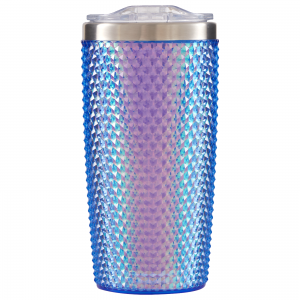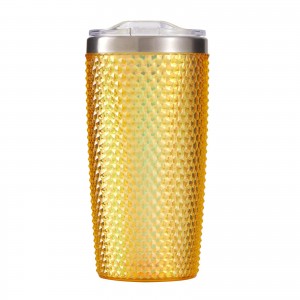Water bottles are an essential part of our daily lives, providing a convenient way to stay hydrated on the go. However, with the growing awareness of environmental issues, choosing the right recycled water bottle has become more important than ever. The size and shape of your water bottle can significantly impact its usability, durability, and environmental footprint. In this comprehensive guide, we will explore the various factors to consider when selecting the perfect recycled water bottle for your needs.
Understanding the Importance of Size and Shape
Before diving into the specifics, it’s crucial to understand why size and shape matter. The right size ensures that you carry the appropriate amount of water for your activities without unnecessary weight, while the shape affects how comfortably you can hold and drink from the bottle. Additionally, both factors play a role in the bottle’s durability and how easily it can be recycled.
Key Considerations for Size Selection
1. Activity Level and Usage
Outdoor Activities: For hiking, camping, or other outdoor adventures, a larger bottle (around 1 liter or more) is ideal to ensure you stay hydrated throughout the day.
Daily Use: A standard size of 500ml to 750ml is suitable for everyday use, fitting easily into bags and providing enough water for regular consumption.
Sports and Fitness: If you’re into sports or fitness, a bottle with a capacity of 750ml to 1 liter is recommended to keep up with your hydration needs during intense workouts.
2. Capacity and Portability
Travel-Friendly Sizes: When traveling, consider a compact bottle that meets airline regulations (usually up to 100ml for carry-on luggage) but can still be refilled once you’ve passed security.
Bulk Storage: For home or office use, larger bottles can be stored in coolers or on shelves, reducing the need for frequent refills.
3. Environmental Impact
Reducing Waste: Larger bottles may reduce the number of bottles needed for the same volume of water, potentially lowering waste.
Recycling Efficiency: Smaller bottles are often easier to recycle due to their manageable size and weight.
Shape Considerations for Optimal Use
1. Ergonomic Design
Grip and Comfort: Look for bottles with a contoured or textured design that provides a secure grip, reducing the risk of accidental drops.
Narrow vs. Wide Mouth: A narrow mouth is ideal for sipping, while a wide mouth allows for faster filling and the addition of ice or fruit infusions.
2. Stability and Durability
Base Design: A wider base can prevent the bottle from tipping over easily, especially when placed on uneven surfaces.
Material Thickness: Thicker materials may add weight but enhance durability, while thinner materials are lighter but may dent more easily.
3. Aesthetic and Practicality
Shape and Style: Choose a shape that appeals to you aesthetically but also fits practical needs, such as a sleek design for easy storage in backpacks.
Customization: Some bottles offer customizable shapes, allowing you to personalize your bottle for both style and functionality.
Special Considerations for Recycled Materials
1. Material Types
Plastic: Recycled PET (Polyethylene Terephthalate) is lightweight and commonly used for water bottles. It’s important to check if the plastic is BPA-free.
Glass: Recycled glass bottles are durable and non-reactive, making them ideal for storing water without any taste transfer.
Stainless Steel: Recycled stainless steel is robust and long-lasting, offering excellent insulation properties.
2. Recycling Symbols and Numbers
Understanding Symbols: Familiarize yourself with recycling symbols (1 to 7) to ensure your bottle can be recycled in your local facilities.
Local Recycling Guidelines: Check with your local recycling center to confirm which materials and shapes they accept.
Creative Uses for Recycled Water Bottles
Beyond hydration, recycled water bottles can be repurposed in numerous creative ways:
Planters: Cut the top off a bottle and use it as a planter for small herbs or flowers.
Storage Containers: Use bottles to store household items like cotton swabs or small tools.
Art Projects: Create decorative art or children’s crafts using painted or decorated bottles.
Conclusion
Choosing the right size and shape for your recycled water bottle is a decision that impacts both your daily convenience and the environment. By considering factors like activity level, portability, ergonomic design, and material type, you can make a choice that aligns with your needs while promoting sustainability. Whether you’re an outdoor enthusiast, a daily commuter, or someone looking to reduce waste at home, there’s a recycled water bottle perfect for you. Start exploring your options today and make a positive impact with every sip!
Post time: Apr-18-2025

